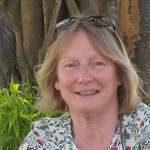Six years after setting up Gaia Salmon, founders Bjarne Bjørkan, Geir Skarstad, and Morten Bjørkan are looking forward to breaking ground on their first land-based farm in early 2022.
Bjørkan, Gaia Salmon’s CEO, said the company has a vision of becoming a leading player in the production of sustainable salmon through the use of recirculating aquaculture system (RAS) technology.
“It’s a long process, developing the concept, searching for suitable land, gaining permits, and arranging finance, but we now have a fantastic project using renewable energy,” Bjørkan told SeafoodSource.
The company has a licence to produce 7,200 metric tons (MT) on a 90-acre site in Norway’s Træna Municipality, which lies just below the Artic Circle, on the country’s west coast. Turnkey aquaculture facility specialist Eyvi and construction firm Total Betong have been engaged to design and oversee the work, which is currently in the pre-project phase.
“Eyvi and Total Betong are world leaders in this field and it is very exciting to be able to join experience from the oil and gas industry with RAS technology to develop innovative process solutions, focusing on fish welfare, biosecurity, and sustainability. We strongly believe this focus will provide us with an advantage in the consumer market, as consumers become more educated and responsible.” Bjørkan said.
Following 30 years’ managing international maritime and oil and gas projects, Bjørkan became interested in land-based salmon production when Norway’s regulatory rules changed to bring them in line with sea-based production, which resulted in comparative project costs becoming more competitive.
A design for combination RAS/flowthrough facility will be presented to the company’s leaders in August, and construction will start early next year. Biosecurity and batch separation are an important part of the design, to ensure that minor issues cannot get out of hand and affect all of the biomass, Bjørkan said.
“We are starting small, but have ambition to grow. We want to learn to walk before we run, so once we know we can grow 7,200 MT efficiently, we plan to scale up to 12,000 MT at the Træna site. There are also longer-term plans to build a 20,000 MT facility, plus hatchery and smolt unit on the mainland. Ultimately we hope to grow 50,000 MT of salmon, and to list on the Oslo Stock Exchange in a few years” he said.
Bjørkan acknowledged that few people have succeeded so far in achieving large volume production in land-based units, so he plans to be conservative when it comes to stocking density.
“We have seen other operators stock their fish up to 90 kilograms per cubic meter, but we will stock them at between 50 to 70 kilograms per cubic meter and monitor progress carefully,” he said.
The plan is to bring in large smolts for finishing initially, and to slaughter and fillet using local processors.
“Once we can produce at scale, then it will be time to look at producing our own branded salmon, and maybe have our own facilities, but that is a long way ahead,” he said.
The company is already in discussions with feed suppliers, with a brief to provide specialist feed made from certified sustainable ingredients. The company has also had initial discussions with the Aquaculture Stewardship Council about the eco-label’s requirements for certification.
“If it was possible to grow organic certified salmon on land, we would aim for that market, but the current regulations do not cater for new developments in technology,” Bjørkan said. “It is a paradox that organic certifications look at fish welfare but do not address sustainability, and we believe this is necessary to meet the world’s environmental and protein requirements of the future.”
Bjørkan said he is keen to make the project part of a circular economy model, and is looking at the potential to utilize sludge produced by the farm to grow vegetables.
“Waste from fish production is a rich fertilizer,” he said. “In theory, you can grow around 7 kilograms of vegetables per kilogram of fish produced, so instead of transporting tomatoes from Spain, we could grow them locally.”
Bjørkan said he believes that promoting sustainability credentials is not just about production, but is also about involving the local community, and he is in the process of setting up an investment vehicle to enable local communities to become small investors in the company. However, he said the company already has a strong investor base in place, including Roald Dolmen’s
RODO Invest, which injected capital earlier this year to finance the building application process and engineering works. RODO Invest now owns 33.3 percent of the company’s shares.
Ex-SalMar CEO and current Nova Austral board member Yngve Myhre also has also invested in the project this year, alongside billionaire Brynjar Kristian Forbergskog, through their respective companies Nima Invest and Saturn Invest. Both have both become valued board advisors, according to Bjørkan.
“With Brynjar and Yngve on the team, we have further strengthened the competence in Gaia Salmon. We value their experience, knowledge, and investment in the company, which will be important for its success,” Bjørkan said.
Gaia Salmon has built a strong team to take the project forward, and recently hired experienced land-based operator Tord Teigstad as operations manager, according to Bjørkan.
“This opportunity was too good to say no to. It is a very exciting project that I look forward to working on,” Teigstad said.
Bjørkan said he’s excited to help write a new chapter in Norway’s long and proud history of fishing and aquaculture.
“People have been harvesting from the sea here for more than 9,000 years, and we intend to continue this legacy,” Bjørkan said.
Photo courtesy of Bjarne Bjørkan/Gaia Salmon







